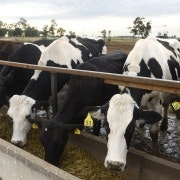Long-term success will challenge cost-cutting miners
The Rio Tinto interim result (Walsh fires Rio to a roaring success, August 7) showed that the strategy of carving into costs while ramping up volumes that is being pursued by the major miners has worked to offset commodity price declines. The key question -- worth billions of dollars -- is whether it will continue to work.
Critical for Rio (and very important for BHP Billiton) is the iron ore price and the structure of the market for seaborne iron ore.
Last year the iron ore price averaged around $US130 a tonne but, with China’s demand softening and production volumes rising strongly as Rio, BHP and Fortescue poured new capacity into the market it has fallen below $US100 a tonne this year, with the spot price now around $US96 a tonne. In the June half, Rio’s average realised price was $US99 a tonne.
Rio said the lower prices wiped $US974 million off the underlying earnings of its iron ore business in the June half year. However, the combination of cost reductions ($US254m pre-tax) and a 10 per cent (or 12.5m tonne) increase in volume (Rio’s share is about 10m tonnes) more than offset the impact of the price decline. The iron ore division lifted underlying earnings 10 per cent or $US410m to $US4.68bn in the half.
The sensitivity of the division to iron prices is acute. A $US10 a tonne change in either direction impacts its full-year earnings by more than $US1.2bn.
The strategy being pursued by the big miners of sharply lifting production and slashing costs has worked so far. It is having a wider impact (positive from their longer term perspective) of driving higher-cost and lower quality production, including Chinese domestic production, out of the market.
Rio is maintaining that strategy. In May its Pilbara complex hit a record annualised run-rate of 290 million tonnes a year. Yesterday Sam Walsh said the group was on track to reach its next production target of 360 million tonnes by the end of the first half of next year.
BHP is following a similar path, producing a record 225 million tonnes in the June year with further capacity increases coming. Fortescue has completed the infrastructure for a run rate of 155 million tonnes a year.
The other big seaborne iron ore producer, Brazil’s Vale, has been somewhat tardier in lifting its production but has big licks of new capacity starting to come on stream towards the end of this year.
Traditionally the second halves of calendar years are the seasonally weaker part of the year for China’s demand for iron ore, so it would be unlikely that the price would rebound over the next few months even if supply weren’t increasing.
With supply growth accelerating -- Goldman Sachs has said the rate of growth in supply is three times the rate of growth in demand -- it is more likely that the downward pressure on the price will intensify into and through 2015. It is quite conceivable that as the structural surplus builds the price will fall below $US90 a tonne.
As Walsh said, in unveiling far better cost-reduction outcomes than the market anticipated, the 'low-hanging fruit' on costs has essentially been taken out. It is going to become increasingly tough to maintain the rate of cost reductions that Rio and BHP have been able to drive through their businesses in the past two years.
That means most of the weight of the attempt to offset further price declines will fall on volume increases.
It is doable but very challenging. Rio, as the low-cost high-quality Pilbara producer, gets earnings before interest, tax, depreciation and amortisation margins in the mid-to-high 60 per cent range. In theory it could absorb further significant price declines if it achieves its planned increase in Pilbara production to 360 million tonnes on time and on budget.
It is worth noting, however, that while Rio did an outstanding job of countering the price declines to date with its cost cuts and volume increases and that the division’s EBITDA of $US8bn was higher than the $US7.64bn generated in the previous corresponding period, it was lower than the $US9.8bn of EBITDA it produced in the second half of last year.
Given the cost and quality advantages of the two biggest Pilbara producers, there isn’t an alternative strategy to the volume-driven response to price declines even if their own actions exacerbate the over-supply of iron ore and therefore exaggerate the price impacts. It will be difficult for them to maintain let alone grow their iron ore earnings over the next couple of years, although those businesses will remain highly profitable almost regardless of the price.
Longer term, the success of the strategy and the absolute profitability of their iron ore businesses will be determined by the extent to which they can drive less competitive producers from the market.
For strategic and/or social reasons there will be probably some sub-economic domestic production -- and maybe some China controlled or influenced offshore production -- which will continue to operate regardless of the price.
In a couple of years’ time, however, Rio, BHP and Vale ought to have re-established a more dominant and stable position than they have today, albeit not as dominant as the one they held before the China-inspired commodity price boom ignited the dramatic surge in production volumes.
















